429. The Chinese had winter solstice
closely after 'the beginning of April':
... In
China, every year about the beginning of April, certain
officials called Sz'hüen used of old to go about
the country armed with wooden clappers. Their business
was to summon the people and command them to put out
every fire. This was the beginning of the season called
Han-shih-tsieh, or 'eating of cold food'. For
three days all household fires remained extinct as a
preparation for the solemn renewal of the fire, which
took place on the fifth or sixth day after the winter
solstice [Sic!] ...
Possibly they connected the current winter
solstice with APRIL (at the time of the Bull) because
that had once upon a time been the place (close to the
Full Moon) for the brilliant Vega, the original - taketake -
star at the Pole, whereas nowadays the right ascension
line at Vega was close to the
Sun 6 days after the solstice. Fire (the Sun) alighted
at the top of the Tree.
... the
Palenque scribes repeated Creation again and described
it as 'it was made visible, the image at Lying-down-Sky,
the First-Three-Stone-Place'. Then we learned that five
hundred and forty-two days later (1.9.2 in the Maya
system), Hun-Nal-Ye 'entered or became the sky' (och
ta chan). This 'entering' event occurred on February
5, 3112 B.C. The act of 'entering the sky' is recorded
on another extraordinary painted pot.
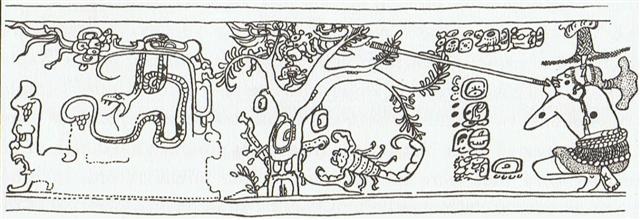
This pot
depicts one of the Hero Twins (One-Ahaw in the Classic
texts and One-Hunaphu in the K'iche' Popol Vuh)
and a great bird who is trying to land in a huge ceiba
tree heavy with fruit. This mythical bird is
Itzam-Yeh, Classic prototype of Wuqub-Kaqix,
'Seven-Macaw', of Popol Vuh fame. In that story,
in the time before the sky was lifted up to make room
for the light, the vainglorious Seven-Macaw imagined
himself to be the sun. Offended by his pride, the Hero
Twins humbled him by breaking his beautiful shining
tooth with a pellet from their blowgun. This pot shows
One-Ahaw aiming at the bird as he swoops down to land in
his tree. As Itzam-Yeh lands on his perch, the
text tells us he is 'entering or becoming the sky'. This
particular 'sky-entering' is not the one mentioned in
the Palenque text. It is the final event that occurred
in the previous creation before the universe was remade.
Before the sky could be raised and the real sun revealed
in all its splendor, the Hero Twins had to put the false
sun, Itzam-Yeh, in his place. If the date on this
pot corresponds to that pre-Creation event, as we
believe it does, then Itzam-Yeh was defeated in
12.18.4.5.0 1 Ahaw 3 K'ank'in (May 28, 3149
B.C.). After the new universe was finally brought into
existence, First Father also entered the sky by landing
in the tree, just as Itzam-Yeh did
...
3112 BC + 1842 AD = 4954 and 4954 / 26000
* 365.25 = ca *69.6 precessional days. Vega (281.8) -
*69.6 = *212.2, which means 'the Bird at the Top'
preceding Vega ought to have been a heliacal star around
day *212 + 80 = 292 - if the year was considered to end
with day 364 (or 365). But if the year ended with day
354 (or 355), then Spica might have been the Bird
preceding Vega. At 'the top of the year' then meaning
its beginning rather than a question of latitude.
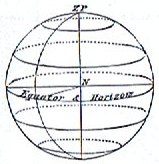 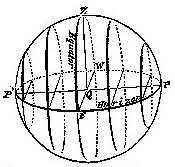
Due to the precession the
Sun came around 64 days earlier in the year and December
27 (= 21 + 6) + 64 = 361 + 64 = 425 = February 28
(59) = June 26 (177) - 472 / 4 (= 182 - 64). And June 26
(354 / 2) - 64 = 113 (APRIL 23) = FEBRUARY 3 (400 = 34)
+ 79 (the astronomically correct day number for the
northern spring equinox):
|
Spica
(202.7) |
78.1 |
Vega
(281.8) |
|
JUNE 10 (161) |
182 |
DEC 10 (344) |
78 |
AUG 27 (240 = 281 - 41) |
182 |
FEBR 27 (464 / 8) → π |
|
Oct 9 (283) |
180 |
April 8 (464) |
77 |
Dec 27 (361 = *281) |
180 |
June 26 (177 = 361 - 184) |
|
"Aug 29 (241 = 161 + 80) |
182 |
"Febr 26 (423) |
78 |
"Oct 16 (320 = 361 - 41) |
180 |
"May 16 (136 = 448 / 8 + 80) |
|
AUG 6 (218 = 241 - 23) |
182 |
FEBR
3 (400) |
78 |
OCT 24 (297 = 361 - 64) |
180 |
APRIL
23 (177 - 64 = 113) |
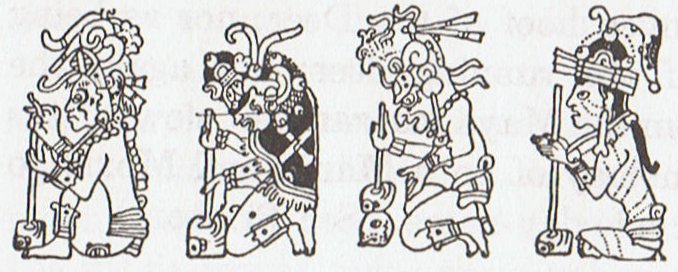
 |
 |
 |
| Cb3-13 (454) |
Cb3-14 (63) |
Cb3-15 |
| manu rere |
tagata - hanau hia |
kiore - henua |
|
Hia.
How many?
Ka hia? Which one? Te hia?
(Teach Yourself Maori) |
|
CLOSE TO THE SUN: |
|
Cat's Eye = NGC6543 Draconis
(272.2),
ζ
Serpentis (272.4),
τ
Ophiuchi (272.9)
*231.0 = *272.4 - *41.4 |
Winnowing Basket-7 (Leopard)
18h (273.4)
NASH (Point) =
γ
Sagittarii
(273.7),
θ
Arae (273.8) |
ZHŌNGSHĀN = ο Herculis
(274.0), π Pavonis (274.6) |
|
Dec 18 |
19 |
20 (354) |
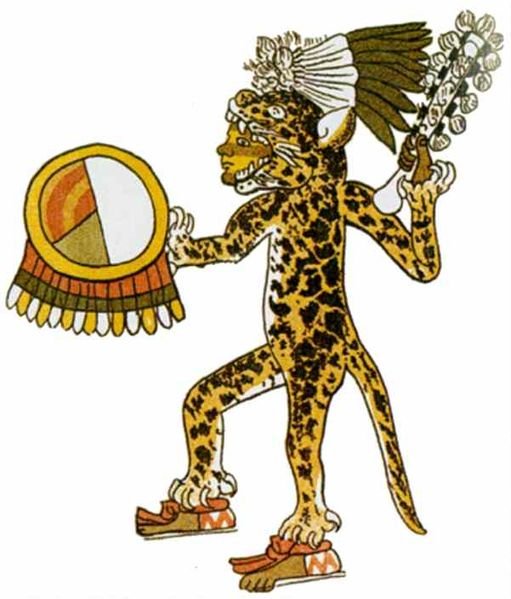 |
|
CLOSE TO THE FULL MOON: |
|
Ardra-6 (The Moist One) / ANA-VARU-8 (Pillar to sit by)
χ¹ Orionis, ξ Aurigae (88.1), BETELGEUZE = α Orionis (88.3), ξ Columbae (88.5), σ Columbae (88.7)
ZUBEN ELGENUBI (α Librae) |
η Leporis (89.0), PRAJA-PĀTI (Lord of Created Beings) = δ Aurigae, MENKALINAN (Shoulder of the Rein-holder) = β Aurigae, MAHASHIM (Wrist) = θ Aurigae, and γ Columbae (89.3), π Aurigae (89.4), η Columbae (89.7)
*48.0 = *89.4 - *41.4 |
μ Orionis (90.3), χ² Orionis (90.5) |
| APRIL 14 (104 = 78 + 26 = 88 + 16) |
15 (*25 = *89 - *64 = *41 - *16) |
16 |

... The earliest depiction that has been linked to the constellation of Orion is a prehistoric (Aurignacian) mammoth ivory carving found in a cave in the Ach valley in Germany in 1979. Archaeologists have estimated it to have been fashioned approximately 32,000 to 38,000 years ago ... The artist cut, smoothed and carved one side (A) and finely notched the other side (B) and the edges. Side A contains the half-relief of an anthropoidal figure, either human or a human-feline hybrid, known as the 'adorant' because its arms are raised as if in an act of worship.
| Egyptian jubilation |
 |
Phoenician he |
 |
Greek epsilon |
Ε (ε) |
|
Wikipedia points at the Egyptian gesture with arms held high as a Sign of jubilation, which may have been the origin (via Phoenician he) of epsilon.


|
On side B together with the four edges is a series of notches that are clearly set in an intentional pattern. The edges contain a total of 39 notches in groups of 6, 13, 7 and 13. A further 49 notches on side B are arranged in four vertical lines of 13, 10, 12 and 13 respectively plus a further notch that could be in either of the middle two lines ... The grouping of the notches on the plate suggests a time-related sequence. The total number of notches (88) not only coincides with the number of days in 3 lunations (88.5) but also approximately with the number of days when the star Betelgeuse (α Ori) disappeared from view each year between its heliacal set (about 14 days before the spring equinox around 33,000 BP) and its heliacal rise (approximately 19 days before the summer solstice).
Conversely, the nine-month period when Orion was visible in the sky approximately matched the duration of human pregnancy, and the timing of the heliacal rise in early summer would have facilitated a ‘rule of thumb’ whereby, by timing conception close to the reappearance of the constellation, it could be ensured that a birth would take place after the severe winter half-year, but leaving enough time for sufficient nutrition of the baby before the beginning of the next winter. There is a resemblance between the anthropoid on side A and the constellation Orion. None of these factors is convincing when taken in isolation, because of the high probability that apparently significant structural and numerical coincidences might have arisen fortuitously. However, taken together they suggest that the anthropoid represented an asterism equivalent to today’s constellation of Orion, and that the ivory plate as a whole related to a system of time reckoning linked to the moon and to human pregnancy. If so, then ethnographic comparisons would suggest that the Geißenklösterle culture related their ‘anthropoid’ asterism to perceived cycles of cosmic power and fertility ...

|
 |
 |
 |
 |
| Cb3-16 (457) |
Cb3-17 |
Cb3-18 |
Cb3-19 (68) |
| henua kua hoi |
kua ka te ahi o te henua |
o te henua kua hoi |
ko te henua kua vero te ahi |
|
Ahi. Fire; he-tutu i te ahi to light a fire. Ahiahi = evening; ahiahi-ata, the last moments of light before nightfall. Vanaga. 1. Candle, stove, fire (vahi); ahi hakapura, match; ahi hakagaiei, firebrand waved as a night signal. P Mgv.: ahi, fire, flame. Mq.: ahi, fire, match, percussion cap. Ta.: ahi, fire, percussion cap, wick, stove. 2. To be night; agatahi ahi atu, day before yesterday. 3. Pau.: ahi, sandalwood. Ta.: ahi, id. Mq.: auahi, a variety of breadfruit. Sa.: asi, sandalwood. Ha.: ili-ahi, id. Ahiahi, afternoon, night; kai ahiahi, supper. P Pau., Mgv., Mq., Ta.: ahiahi, afternoon, evening. Ahipipi (ahi 1 - pipi 2) a spark, to flash. Churchill.
Hoki. To return, to go back, to come back; ka hoki ki rá, go back there! ana oho koe ki Hiva, e hoki mai ki nei, if you go to the mainland, do come back here again. Vanaga. 1. Also, what; ki ra hoki, precisely there; pei ra hoki, similitude, likeness; pei ra hoki ta matou, usage. P Pau.: hokihoki, often. Mgv.: hoki, also, and, likewise. Mq.: hoi, surely. Ta.: hoi, also, likewise. 2. To return, to turn back, to draw back, to give back, to tack; mau e hoki mai, to lend; hoki hakahou, to carry back; hoki amuri, to retrograde; hakahoki, to bring back, to send back, to carry back, to restore, to renew, to revoke, to remove, to dismiss, to pay, to pardon, to compress; hakahokia, given up; hakahokihaga, obligation. P Pau.: hokihoki, to persist, to insist; fakahoki, to give back. Mgv.: hoki, to return, to retrace one's steps; oki, to return, to come back. Ta.: hoi, to return, to come back. Ta.: mahoi, the essence or soul of a god. Churchill. |
|
CLOSE TO THE SUN: |
|
ι Pavonis (275.1), POLIS = μ Sagittarii (275.9)
MENKAR (α Ceti) |
η Sagittarii (276.9) |
Purva Ashadha-20 (Winnowing Basket) |
| KAUS MEDIUS = δ Sagittarii, κ Lyrae (277.5), TUNG HAE (Heavenly Eastern Sea) = η Serpentis (277.7), SHAOU PIH (Minor Minister) = φ Draconis (277.8), KWEI SHE = χ Draconis (277.9) |
φ Oct. (278.1), KAUS AUSTRALIS = ε Sagittarii (278.3), ξ Pavonis (278.4), AL ATHFAR (The Talons of the Falling Eagle) = μ Lyrae (278.6)
*237 = *278.4 - *41.4 |
| SOLSTICE |
Dec 22 |
23 (357) |
24 |
|
... As has already been mentioned, the Delphians worshipped Dionysus once a year as the new-born child, Liknites, 'the Child in the Harvest Basket', which was a shovel-shaped basket of rush and osier used as a harvest basket, a cradle, a manger, and a winnowing-fan for tossing the grain up into the air against the wind, to separate it from the chaff. The worship of the Divine Child was established in Minoan Crete, its most famous early home in Europe. In 1903, on the site of the temple of Dictaean Zeues - the Zeus who was yearly born in Rhea's cave at Dicte near Cnossos, where Pythagoras spent 'thrice nine hallowed days' [27] of his initiation - was found a Greek hymn which seems to preserve the original Minoan formula in which the gypsum-powdered, sword-dancing Curetes, or tutors, saluted the Child at his birthday feast. In it he is hailed as 'the Cronian one' who comes yearly to Dicte mounted on a sow and escorted by a spirit-throng, and begged for peace and plenty as a reward for their joyful leaps ...

|
|
CLOSE TO THE FULL MOON: |
|
6h (91.3)
ν Orionis (91.4), θ Columbae (91.5), π Columbae (91.6)*50 = *91.4 - *41.4 |
ξ Orionis (92.5) |
Al Han'ah-4 (Brand) / Maru-sha-pu-u-mash-mashu-7 (Front of the Mouth of the Twins)
TEJAT PRIOR = η Gemini (93.4), γ Monocerotis (93.5), κ Aurigae (93.6), κ Columbae (93.8)
*52 = *93.4 - *41.4 |
FURUD = ζ Canis Majoris (94.9) |
| APRIL 17 (107) |
18 |
19 |
20 |
| 25 (163 + 75 = 238) |
AUG 26 |
27 (240 = 281 - 41) |
28 (*161) |
29 (242 = 2 * 121) |
| 22 (220 + 75 = 10 * 29½) |
OCT 23 |
24 |
25 (*218 = *161 + *57) |
26 |
 |
 |
 |
 |
 |
| Cb3-20 (461) |
Cb3-21 (384 + 78) |
Cb3-22 |
Cb4-1 (392 + 72) |
Cb4-2 |
| kiore - henua |
manu rere i te taketake |
te henua - mau i te taketake |
manu rere |
kiore - henua |
|
... The specific epithet taketake
is Māori for long established, ancient,
or original ... |
|
CLOSE TO THE SUN: |
|
KAUS BOREALIS = λ Sagittarii (279.3) |
ν Pavonis (280.4), κ Cor. Austr. (280.9) *239 = *280.4 - *41.4 |
Abhijit-22 (Victorious)
θ Cor. Austr. (281.0), VEGA = α Lyrae (281.8) |
no star listed (282) |
ζ Pavonis (283.4), λ Cor. Austr. (283.6), DOUBLE DOUBLE = ε Lyrae (283.7), ζ Lyrae (283.8)
*242 = *283.4 - *41.4 |
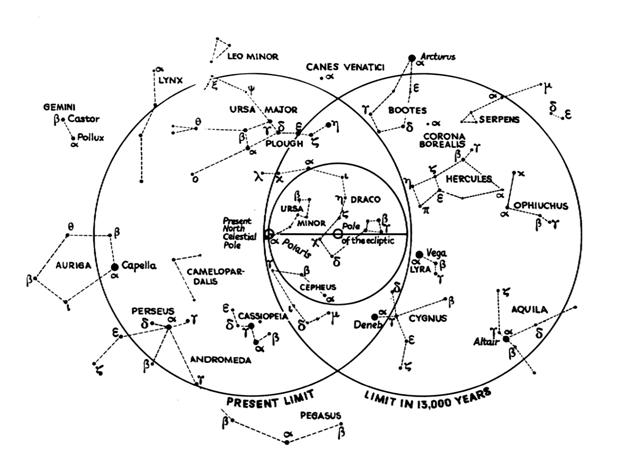 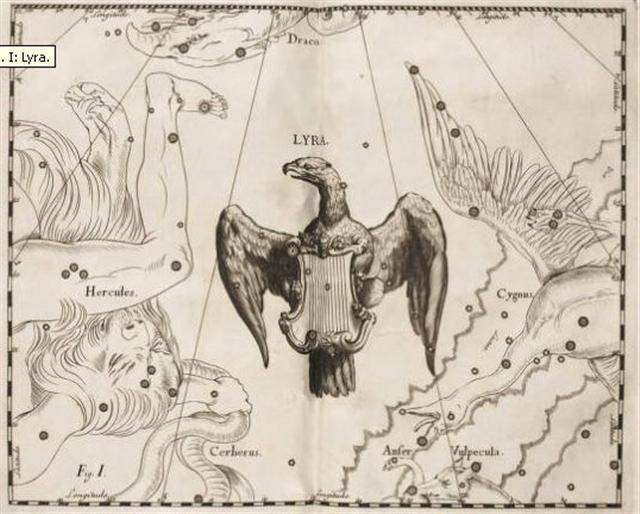
|
| Dec 25 |
26 (360) |
27 |
28 |
29 |
| SOLSTICE |
°Dec 22 (356) |
23 (*277) |
CHRISTMAS EVE |
25 |
| 'Nov 28 |
29 (360 - 27 = 333) |
30 (320 + 14) |
'Dec 1 |
2 (*256 = 16 * 16) |
| "Oct 14 |
15 |
16 (320 = 357 - 27) |
17 |
18 (*242 = 2 * 121) |
|
CLOSE TO THE FULL MOON: |
| ST JOHN'S DAY |
June 25 |
26 (177 = 6 * 29½) |
27 |
28 (*99) |
| "May 14 (59 + 75) |
15 |
16 (136 = 272 / 2) |
17 |
18 (*58) |
|
Well-22 (Tapir) / Arkū-sha-pu-u-mash-mashu-8 (Back of the Mouth of the Twins)
δ Columbae (95.2), TEJAT POSTERIOR = μ Gemini, MIRZAM (The Roarer) = β Canis Majoris (95.4), CANOPUS (Canopy) = α Carinae (95.6), ε Monocerotis (95.7), ψ1 Aurigae (95.9)
*54 = *95.4 - *41.4 |
no star listed (96) |
β Monocerotis, ν Gemini (97.0) |
no star listed (98) |
ν Puppis (99.2), ψ3 Aurigae (99.4), ψ2 Aurigae (99.5)
*58 = *99.4 - *41.4
GEMMA (α Cor. Bor.)
|
 ... The Pythagoreans make Phaeton fall into Eridanus, burning part of its water, and glowing still at the time when the Argonauts passed by. Ovid stated that since the fall the Nile hides its sources. Rigveda 9.73.3 says that the Great Varuna has hidden the ocean. The Mahabharata tells in its own style why the 'heavenly Ganga' had to be brought down. At the end of the Golden Age (Krita Yuga) a class of Asura who had fought against the 'gods' hid themselves in the ocean where the gods could not reach them, and planned to overthrow the government. So the gods implored Agastya (Canopus, alpha Carinae = Eridu) for help. The great Rishi did as he was bidden, drank up the water of the ocean, and thus laid bare the enemies, who were then slain by the gods. But now, there was no ocean anymore! Implored by the gods to fill the sea again, the Holy One replied: 'That water in sooth hath been digested by me. Some other expedient, therefore, must be thought of by you, if ye desire to make endeavour to fill the ocean ... ... Canopy ... covering over a throne, etc. XIV (Wycl.). Late ME. canope, canape - medL. canopeum baldacchino, for L. cōnōpēum, -eum, -ium net over a bed, pavilion - Gr. kōnōpeîon Egyptian bed with mosquito curtains, f. kōnōps gnat, mosquito ... |
|
... In other words, the ancient Druidic religion based on the oak-cult will be swept away by Christianity and the door - the god Llyr - will languish forgotten in the Castle of Arianrhod, the Corona Borealis. This helps us to understand the relationship at Rome of Janus and the White Goddess Cardea who is ... the Goddess of Hinges who came to Rome from Alba Longa. She was the hinge on which the year swung - the ancient Latin, not the Etruscan year - and her importance as such is recorded in the Latin adjective cardinalis - as we say in English 'of cardinal importance - which was also applied to the four main winds; for winds were considered as under the sole direction of the Great Goddess until Classical times ... |
| 21 (36 + 75 = 111) |
APRIL 22 |
23 (177 - 64 = 113) |
24 |
25 (*35) |
| 25 (*341 = *266 + *75) |
26 (*96 + *246 = *342) |
FEBR 27 (464 / 8) → π |
28 (59 = 80 - 21) |
MARCH 1 (242 - 182) |
At the Hawaiian new year they were splashing water (hiku wai), perhaps to be in harmony with Situla (*342.7) in Aquarius - which came *140.0 right ascension days after Spica (*202.7). And from Canopus (Agastya) to Situla there was half a year (358 - 175 = 183) - given this measure was taken from June 24 (175) to DECEMBER 24 (358). But since the time of the Bull the time for splashing water had advanced with around 64 days in the Sun year, and the measure from June 24 (175) to February 25 (56 + 365 = 421) was nowadays 246 (= 2 * 123 = 6 * 41) days (= 183 + 63).
| CLOSE TO THE SUN: |
| DEC 22 |
23 (*277) |
CHRISTMAS EVE |
25 |
26 (360) |
27 |
 |
 |
 |
 |
 |
 |
| Gb2-21 |
Gb2-22 |
Gb2-23 |
Gb2-24 (50) |
Gb2-25 (280) |
Gb2-26 |
| δ Tucanae (340.1), ρ Cephei (340.2), ν Gruis (340.3), ζ Aquarii, δ Gruis (340.4), 5/1100 Lac. (340.7), σ Aquarii, 6/650 Lac. (340.9) *299 = *340.4 - *41.4
PROCYON (α Canis Minoris)
|
υ Oct. (341.0), α/91 Lac. (341.1), HOMAN (Hero) = ζ Pegasi, β Piscis Austrini (341.2), ν Tucanae (341.5), υ Aquarii (341.9) |
η Aquarii (342.1), σ Gruis (342.4), SITULA (Water-jar) = κ Aquarii (342.7) *301 = *342.4 - *41.4 |
ε Piscis Austrini (343.5), ο Pegasi, β Gruis (343.8) |
ρ Gruis (344.0), MATAR (Rain) = η Pegasi (344.2), η Gruis (344.6), β Oct. (344.7) |
λ Pegasi (345.0), ξ Pegasi (345.1), ε Gruis (345.3), τ Aquarii (345.7), ξ Oct. (345.8), μ Pegasi (345.9) |
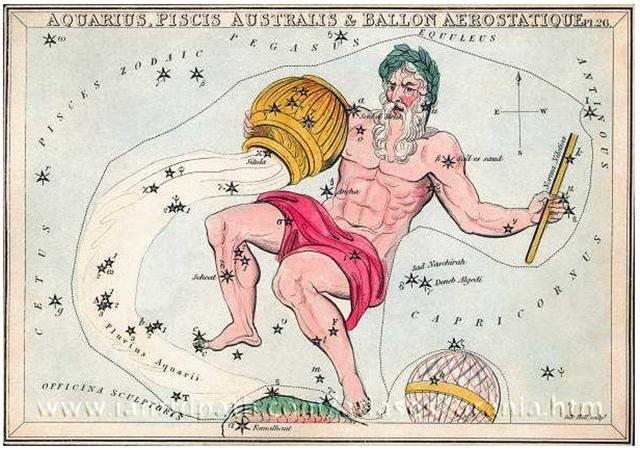 |
| Febr 24 |
25 (*341) |
26 |
27 (58) |
28 (424) |
March 1 (*345) |
| °Febr 20 |
21 (52) |
22 |
Terminalia |
24 (420) |
25 (*341) |
| 'Jan 28 (393) |
29 (*314) |
30 |
31 |
'Febr 1 |
2 (33) |
| "Jan 14 |
15 (*300) |
16 |
17 |
18 (383) |
19 |
... in the ceremonial course of the coming year, the king is symbolically transposed toward the Lono pole of Hawaiian divinity ... It need only be noticed that the renewal of kingship at the climax of the Makahiki coincides with the rebirth of nature. For in the ideal ritual calendar, the kali'i battle follows the autumnal appearance of the Pleiades, by thirty-three days - thus precisely, in the late eighteenth century, 21 December, the winter solstice. The king returns to power with the sun. Whereas, over the next two days, Lono plays the part of the sacrifice. The Makahiki effigy is dismantled and hidden away in a rite watched over by the king's 'living god', Kahoali'i or 'The-Companion-of-the-King', the one who is also known as 'Death-is-Near' (Koke-na-make). Close kinsman of the king as his ceremonial double, Kahoali'i swallows the eye of the victim in ceremonies of human sacrifice ... In the deep night before the image [of Lono] is first seen, there is a Makahiki ceremony called 'splashing-water' (hi'uwai). Kepelino tells of sacred chiefs being carried to the water where the people in their finery are bathing; in the excitement created by the beauty of their attire, 'one person was attracted to another, and the result', says this convert to Catholicism, 'was by no means good'.
At dawn, when the people emerged from their amorous sport, there standing on the beach was the image of Lono. White tapa cloth and skins of the ka'upu bird hang from the horizontal bar of the tall crosspiece image. The ka'upu is almost certainly the albatross, a migratory bird that appears in the western Hawaiian chain - the white Lanyon albatross at Ni'ihau Island - to breed and lay eggs in October-November, or the beginning of the Makahiki season ...

... The idea of 'baptism' (Greek: báptein = dip) was probably inherited from the ancient Babylonians and their fish-god Oannes (Iōannēs, Giovanni, Juan, Ivan, Iain, Jean, Hans, John, etc).
... The rollers began to move, and then the canoe went forwards, slowly at first as the men's hands steadied it and then swiftly and well poised as it gracefully descended alone and sat upon the sea, which rose in great rolling waves caused by a wind sent to meet it by the aster Ana-mua (Antares in Scorpio), the parent pillar of the sky. The spectators greatly admired Hiro's ship and raised deafening shouts. Then the canoe was made to drink salt water; it was dipped forwards and backwards in the waves of the great moving altar of the gods and thus consecrated to Tane. A marae was made for him in the little house aft of the deck, and the three masts were rigged with ropes and strong mats for sails and long tapa pennants streaming from them ...
... The Mahabharata insists on six as the number of the Pleiades as well as of the mothers of Skanda and gives a very broad and wild description of the birth and the installation of Kartikeya 'by the assembled gods ... as their generalissimo', which is shattering, somehow, driving home how little one understands as yet. The least which can be said, assuredly: Mars was 'installed' during a more or less close conjunction of all planets; in Mbh. 9.45 (p. 133) it is stressed that the powerful gods assembled 'all poured water upon Skanda, even as the gods had poured water on the head of Varuna, the lord of waters, for investing him with dominion'. And this 'investiture' took place at the beginning of the Krita Yuga, the Golden Age ...
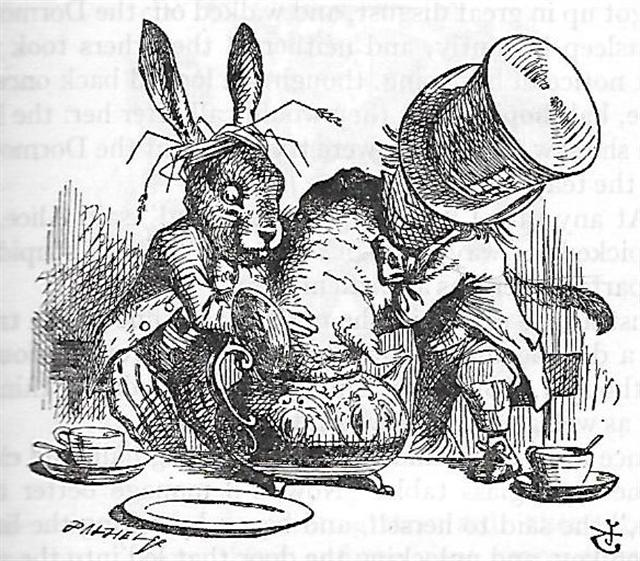
|





























